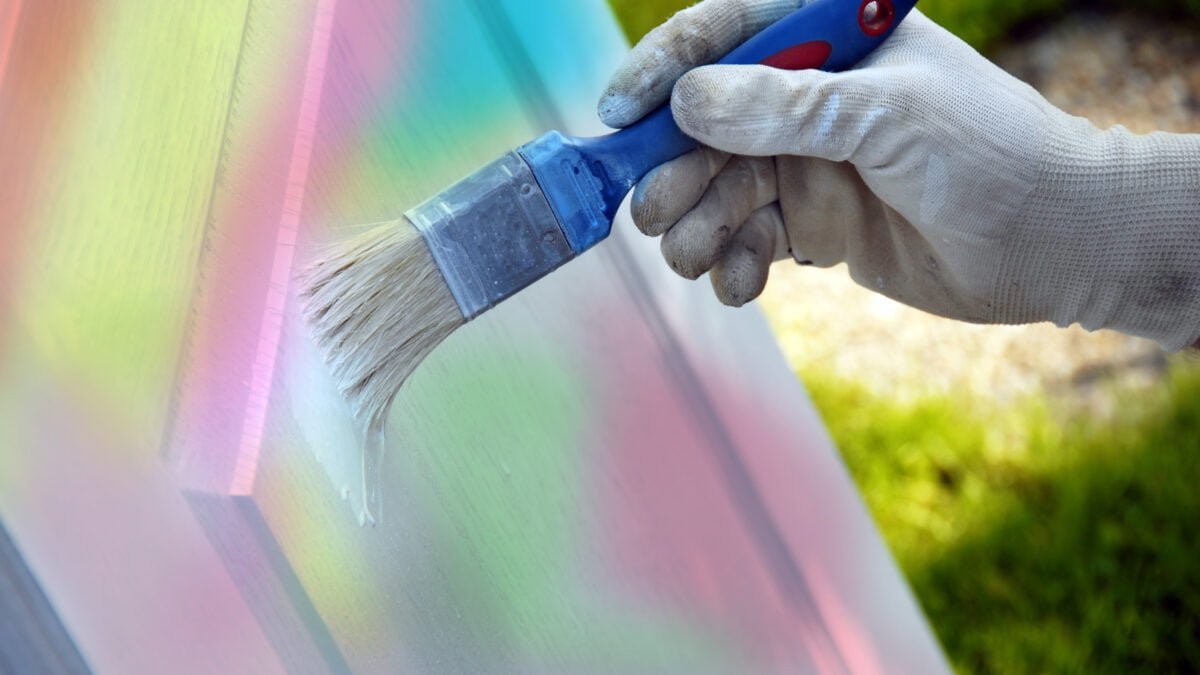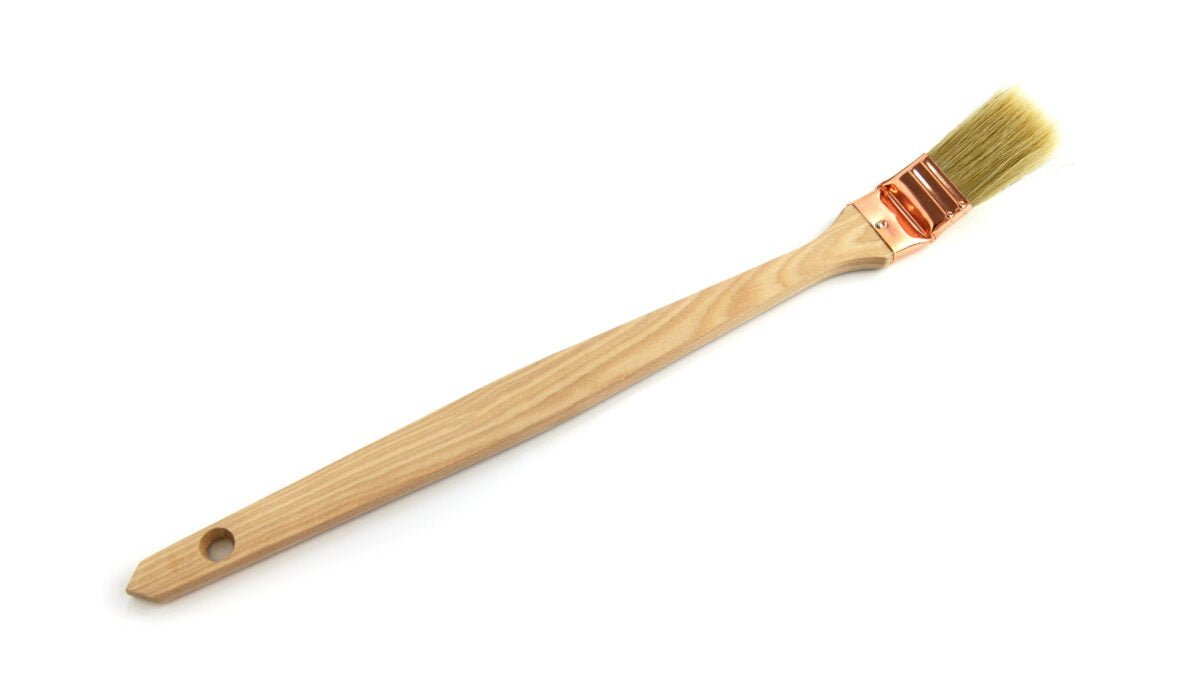
Did you know that paint for skirting boards (or baseboards as they’re sometimes known) dates back to the Victorian era? Used to create a seal between the wall and floor, they provided a significant improvement in insulation, as well as being ornate and decorative.
So when repainting your skirting board, how do you know how to find the best paint for skirting boards? Well keep reading as we have the answers!
When painting your skirting boards, there are a few things to consider in order to ensure a professional and polished finish. The type of paint you use is important, as is the colour and the method of application. In this blog post, we’ll guide you through the best paint for skirting boards, helping you to choose the right option for your home.

Selecting the Right Type of Paint
If your skirting boards are looking a little worse for wear, it might be time to give them a fresh coat of paint. But what type of paint should you use?
There are different types of paint finishes from matt paints to gloss paints, and each has its own advantages and disadvantages. The best one for you will depend on your skirting boards’ condition and the type of finish you want.
If you want a high-gloss finish paint job, you’ll need to use an oil-based paint. This type of paint is durable and easy to clean, but gloss paints can be tricky to apply and aren’t suitable for all types of skirting boards.
If you’re looking for a more matte finish, you can use a water-based paint with a satin finish. This type of paint is easier to apply and is less likely to show brush strokes, but it isn’t as durable as oil-based paint. It’s more often used on walls, with a gloss or semi-gloss paint for trim.
If your skirting boards are in good condition, you can use either type of paint. However, if they’re in poor condition, you should use an oil-based paint to help cover up any imperfections.
Choosing the Right Color
When it comes to choosing the right color for your skirting boards, there are a few things to consider. You want to make sure the color complements the rest of your décor and creates a cohesive look.
If you’re painting over existing paint, you can use a color that’s similar or slightly darker than the original. This will help create a subtle contrast without being too jarring.
If you’re starting from scratch, you can choose any color you like. However, it’s best to stick to neutral tones such as white paints, cream paint, or eggshell paint. These colors will help create a timeless look that won’t go out of style.
Cleaning the Skirting Boards
Before you start painting, it’s important to make sure your skirting boards are clean. This will help the paint adhere better and ensure a professional finish.
To clean your skirting boards, use a damp cloth to remove any dirt or dust. You can also use a mild detergent or a sugar soap solution for more stubbon or dirty boards. Once they’re clean, let them dry completely before you start painting.
And, don’t forget to put masking tape down so you don’t get paint and primer all over your wooden floors or carpet!
Applying Primer
Now that you’ve chosen the best paint for your skirting boards, it’s time to apply the primer. This will help the paint to adhere better and provide a smoother finish. Here’s how to do it:
1. Start by sanding down the skirting boards with fine-grit sandpaper. This will create a smooth surface for the primer to adhere to without the dried excess paint caused by the last paint job!
2. Next, apply a layer of primer to the skirting boards with a decent quality paint brush or roller. Make sure to follow the manufacturer’s instructions for best results.
3. Once the primer is dry, you’re ready to paint! Apply a layer of paint to the skirting boards, using a brush or roller. Again, make sure to follow the manufacturer’s instructions.
4. Allow the paint to dry completely before moving on to the next step.
Painting the Baseboards
If you’re painting your skirting boards, you’ll want to choose the best paint for the job. Whether you’re looking for an oil-based or water-based paint, there are a few things to keep in mind.
Oil-based paints are more durable and resistant to scratches, but they’re also more difficult to work with. Water-based paints are easier to apply and clean up, but they’re not as tough.
If you’re not sure which type of paint to use, ask a professional at your local hardware store. They can help you decide which type of paint is best for your project.
Sealing the Paint
Sealing the paint is an important step in ensuring the longevity of your paint job. A sealer will protect the paint from wear and tear, as well as from moisture and other environmental factors.
When choosing a sealer, be sure to pick one that is compatible with the type of paint you are using. For example, if you are using latex paint, you will need a latex-based sealer. Applying the sealer is a simple process: simply brush it on or spray it on, and then let it dry.
Troubleshooting Tips
If you’re having trouble painting your skirting boards, here are seven troubleshooting tips to help you get the job done:
1. Make sure you’re using the right type of paint.
2. Use a primer if your skirting boards are particularly absorbent.
3. Use a higher quality paint for a smoother finish.
4. Use a paintbrush with synthetic bristles for a smoother finish.
5. Use a foam roller for a more even finish.
6. Make sure you’re using enough paint.
7. Make sure you’re giving the paint enough time to dry between coats.
Touching Up Any Imperfections
When you’re painting your skirting boards, it’s important to touch up any imperfections so that the final product looks its best. Fortunately, this is relatively easy to do.
First, sand down the area around the imperfection with fine-grit sandpaper. This will help to smooth out the surface and provide a good surface for the paint to adhere to.
Next, apply a thin layer of Spackle or putty over the imperfection. Use a putty knife to smooth it out so that it’s level with the rest of the surface.
Once the Spackle or putty is dry, sand it down again so that it’s completely smooth.
Finally, paint over the area with the rest of the skirting board. Apply two coats of paint if necessary.
If you’re looking for the best paint for skirting boards, we recommend choosing a product that is specifically designed for baseboards or trim. These paints usually have a higher level of pigment and binders, which helps them adhere better to surfaces and resist damage from foot traffic.
Don’t Skirt Around the Paint Quality
Make sure you use a good quality paint, especially if you’re priming the boards first with an undercoat. That way, you’ll find yourself using less paint and get a much smoother, more durable finish than a cheap paint. In turn your home will look brand new!
Keep reading for more painting advice!








